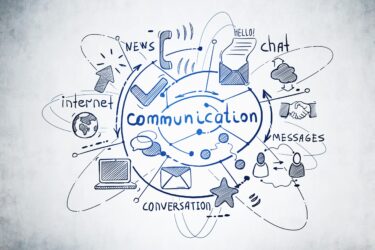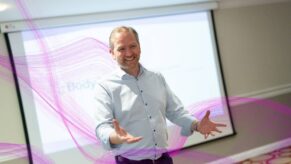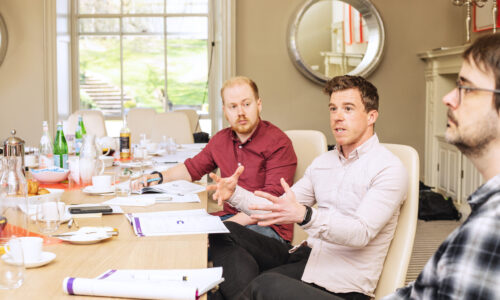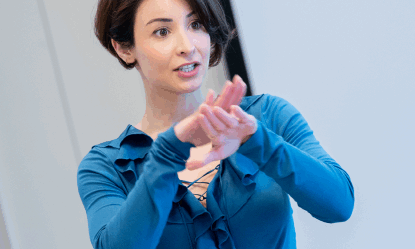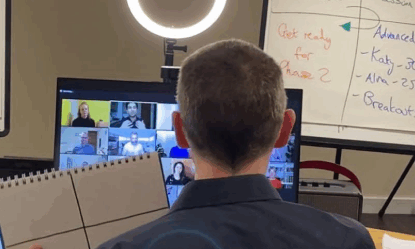‘The words information and communication are often used interchangeably, but they signify different things. Information is giving out; communication is getting through.’
Communication vs Information – How To Get Your Message Heard And Understood
Are you communicating, or are you just passing on information? Is your message getting heard?
‘The team meeting will take place on Friday at 10 am’ is information. A simple transfer of data. On the other hand, ensuring that your team feels motivated and engaged enough to come to the meeting requires effective communication.
Sydney Harris, who was a journalist for the Chicago Daily News, had it right:
‘The two words information and communication are often used interchangeably, but they signify quite different things. Information is giving out; communication is getting through’.
Of course, you say. That’s obvious! But we see this disconnect between giving out information and communicating effectively so often in business. I’m sure you’ve been in meetings where the presenter hides behind the slides and runs through meaningless data or an online discussion where no one has their camera on, and one person speaks for 60 minutes. How do you feel when you come out of those meetings? Bored, disengaged, tired? Why? It was just information – not communication.
If you ask any head of industry the number one business skill they want their leaders to have, communication would come top almost every time. It’s a skill that trumps strategy and vision. Without excellent communication, teams will never put the strategy into action.
So, what is effective communication, and why is it important? Here are three powerful skills which all great communicators have in common.
EFFECTIVE BODY LANGUAGE
‘Your body communicates as well as your mouth. Don’t contradict yourself’ Allen Ruddock
Humans are herd animals, and we look to the person leading the conversation as the pack leader. If your body language is saying something different to your words, the audience can get the wrong impression. Instead of being a trusted pack leader, you may come across as a push-over, a fraud, or arrogant just by the way you’re standing or sitting.
One simple thing to consider is, are you congruent? Does your tone of voice and body language match what you’re saying? Tone of voice also plays a part. Take a video of yourself and watch it back. Does your tone fit with your message? How about your body language? An audience will form an opinion about you within a few seconds of seeing you; the same is true when they hear you. So make sure you guide people clearly through actions and tone, so they understand how to react and feel.
ACTIVE LISTENING
‘True listening involves setting aside the self’ M. Scott Peck
The feeling you get when someone genuinely listens to you is powerful; it’s a lived experience of being human. To listen well is hard. You know you’re doing it well if you come away from a conversation feeling exhausted! To truly listen requires removing your filters and listening with the intent to understand, not listening with the intent to reply (which we are all guilty of at times).
Think of some of the best conversations you’ve ever had, and it was probably down to both parties listening well. It feels effortless, the conversation flows, and information is forthcoming. When you listen, you also show empathy, which builds trust with the other person; trust builds rapport, strengthening relationships – it’s a win-win.
So put aside your agenda and focus on the other person. This will increase your presence.
STORYTELLING
‘No one ever made a decision because of a number; they need a story’ Daniel Kahneman
Remember earlier we spoke about the difference between information and communication? Storytelling sets the two apart and has the power to captivate, inspire and motivate your audience. Consider this: a meeting is not a place to deliver information. Instead, it’s an opportunity for you to explain to your audience how they should feel about that information. You best achieve this by weaving your message into a compelling story. We’ve been telling stories for tens of thousands of years. The simplest and best stories are the ones that focus on a challenge and moves them on a journey towards a greater goal. Shakespeare used this method, as did Dickens and Tolkien. You’ll see a similar structure in the best business presentations. Part of storytelling is also considering the character you or your audience plays. It might be easy to think of yourself as the hero, but the best communicators know different. You are the mentor, guiding your audience, the heroes, on a journey to a better place. Make them the caped crusader, not you.
The fact is you don’t need to wear a superhero outfit, but your audience will take more notice of your message if you understand what they need to know and then activate their imagination, engage their focus, and excite their energies through what they hear and what they see.
It’s not complicated. Learn more about how you can develop your communication style using these simple tips.
